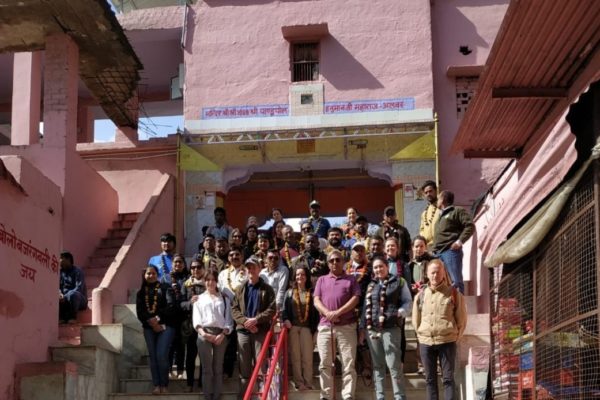
8th February
by Inga McDermott
Today the course moved on to discuss the human-wildlife interface and how this can impact disease. After an introductory lecture in the morning, we set off for a field visit to Pandupole temple which is situated within the protected area of Sariska Tiger reserve. As we drew closer to the temple the landscape started to change to a beautiful green oasis with many palm trees, high rocky cliffs and natural water pools. We had a sighting of a crested serpent eagle just before entering the temple area.
Pandupole temple is an important temple in Hindu legend and worships the God Hanuman (the monkey God). We all visited the temple and took part in a puja ritual receiving blessings with flower garlands and tying of the Moli dhaga threads by the priest. After this, we enjoyed some masala chai and food. We were impressed to see the food served in bowls made entirely from leaves and chai served in natural clay cups which are both natural products and fully recyclable.
Immediately upon arriving we saw many Langur and Rhesus macaque monkeys around the area and the macaques were drinking from the outdoor human water fountains. This was a very clear example of the potential for disease spread at an interface where wildlife and humans meet. The temple is open to the public on Tuesdays and Saturdays and we had been aware of higher volumes of traffic in the forest on these days and wild monkeys lining the roads as they have become accustomed to getting supplementary feeding from the passing tourist vehicles which further increases the potential for close contact and disease transfer. We discussed scenarios in groups for disease transfer at the human-wildlife interface that the temple provides and what mitigation and surveillance measures could be considered. This was an enjoyable day combining learning about disease interfaces with a cultural experience trip.


